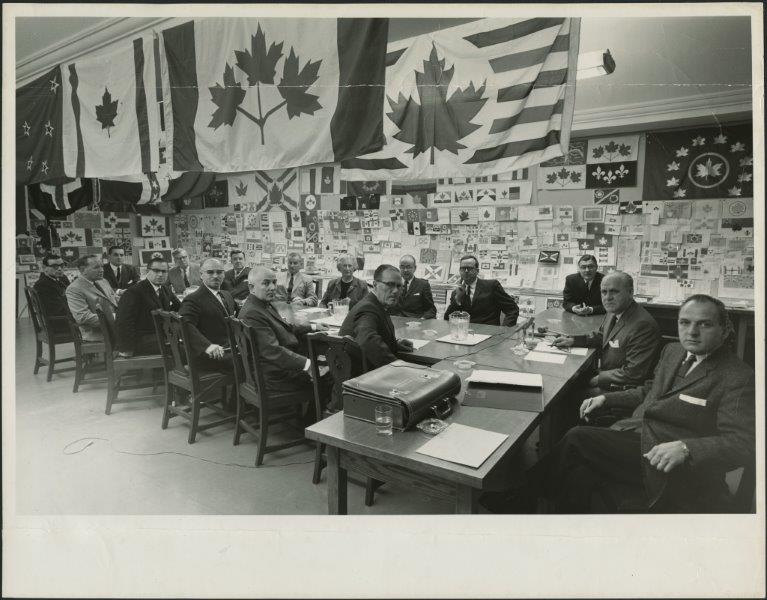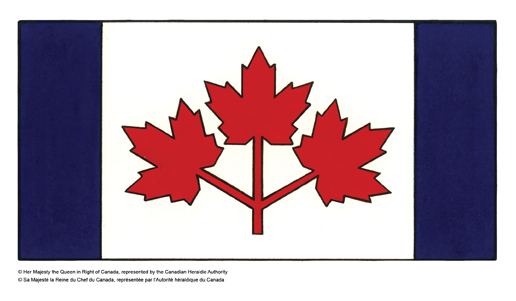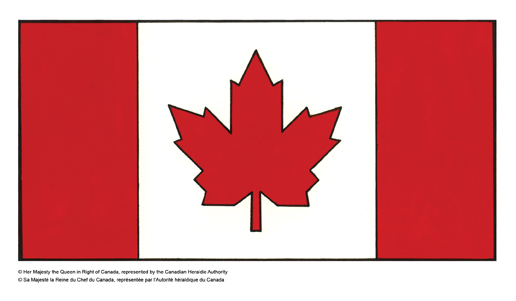Origin of Canada's Flag
Canada fought under the Red Ensign flag during the two World Wars. After the First World War and again after the Second World War, the Government of Canada discussed the importance of our country having its own flag. Attempts to adopt a specific design repeatedly failed as consensus could not be reached.
In 1964, the Government made the creation of a distinctive Canadian flag a priority as the 1967 centennial celebration of Confederation was approaching. When Parliament could not reach agreement on the design, the task of finding a national flag was given to an all-party Parliamentary committee.

The all-party Parliamentary committee with the thousands of different designs submitted for the Canadian Flag.
Photo Cliff Buckman, courtesy Queen's University Archives.After considering thousands of proposals for flags submitted by Canadians, the committee chose three final designs:

A Red Ensign with the fleur-de-lis and the Union Jack

Three red maple leaves between two blue borders

A red maple leaf on a white square between two red borders
It was the single leaf, red and white design that the committee recommended to Parliament. The motion was passed to adopt this design as the official National Flag of Canada with a majority vote of 163 to 78.
The winning flag was selected for the following reasons:
- The clarity and striking design made it easily recognizable.
- It used Canada’s official national colours.
- The maple leaf had already become a popular emblem of Canadian national identity at home and abroad.